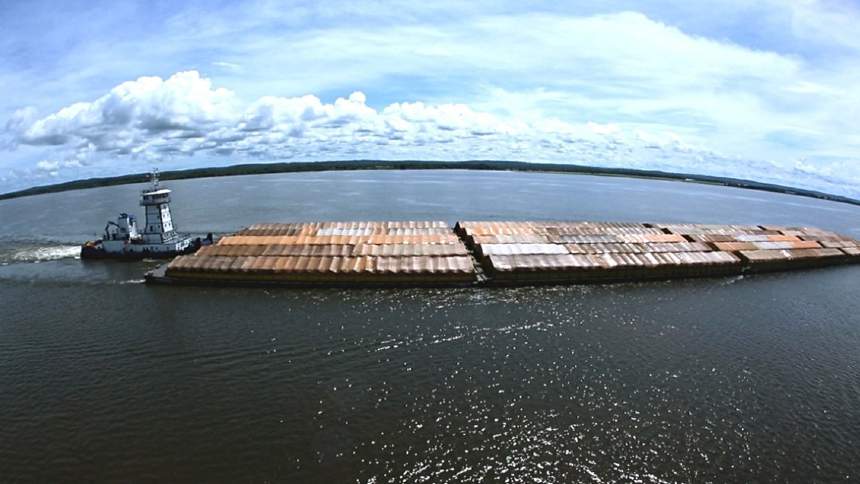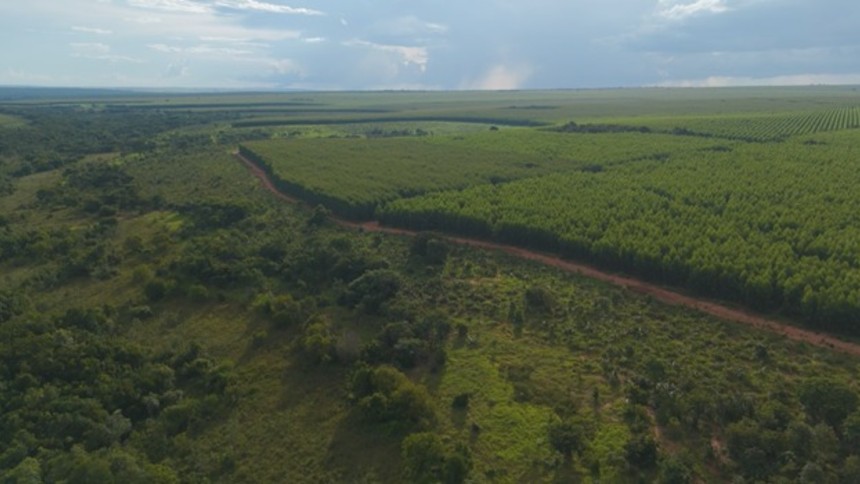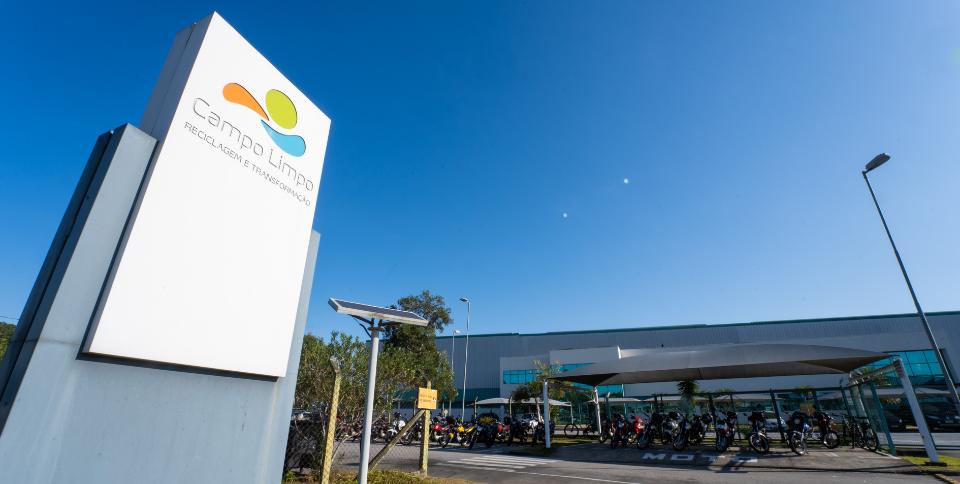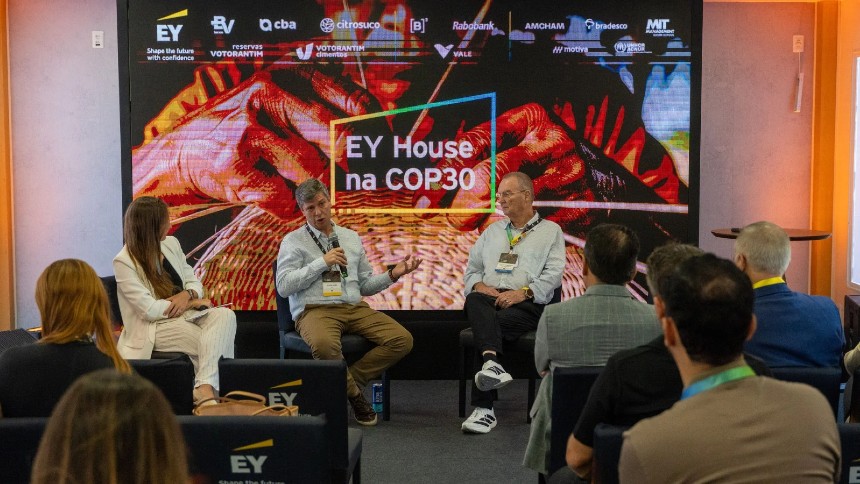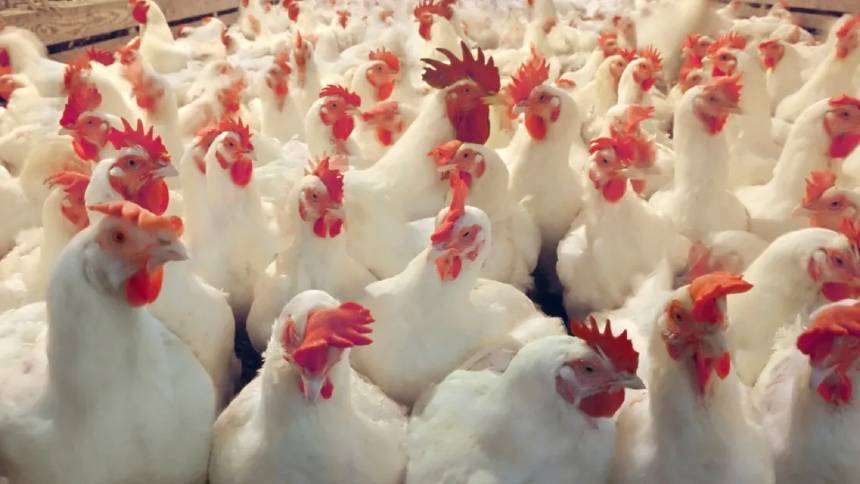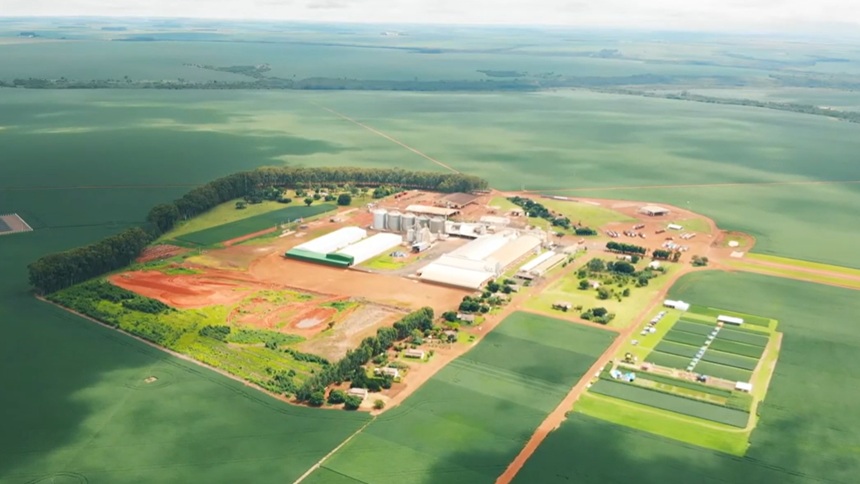On the next few days, a barge from Amaggi Logistics and Operations is expected to leave the company’s facilities in Porto Velho (RO) for a historical trip through the Madeira river waterway. For about 11 days, it will travel back and forth to and from the Itacoatiara port (AM), a route repeated approximately 160 times a year to transport 8 million tons of grains.
What makes this trip unique is the fuel to be used on the pusher – name given to the barge used to, as the name explains, push the set of lighters loaded. For the first time, the engines will be exclusively biodiesel-powered (B100) .
“We have made a request to ANP (Brazilian National Agency of Petroleum) and are waiting for consent at any time to start tests in one more front of our decarbonization project,” stated Ricardo Tomczyk, Institutional Relations Director from Amaggi, to AgFeed.
As soon as its first B100 freight, carrying nearly 50,000 tons of soy to the port and bringing fertilizers on its return journey, sails away from Porto Velho, the group will start a new phase of its effort to fulfill its decarbonization commitments, made a few years ago, to make its operations net zero by 2050.
“We are trying every possible way that will lead us to this, with regenerative agriculture, direct planting, non-conversion of areas and, now, the use of biofuel,” Tomczyk says.
The strategy to use biodiesel in the leading role gained traction and went full speed in 2023. Over the past few months, Amaggi announced a series of initiatives involving the replacement of fossil diesel with biofuel produced by the own company.
The first of them was the start of operation of the first plant for processing soil into biodiesel, in May 2023. With capacity for producing 360,000 tons of biodiesel a year, the plant was the result of R$ 75 million in investment, announced in 2018 and made with the company’s soy crusher in Lucas do Rio Verde (MT).
Near the end of the plant’s construction, in early 2022, Tomczyk says the group shareholders demanded that the Agro division developed studies on the use of biodiesel in the fleet of agriculture machines working in the farms operated by the company.
“The first step was to look for benchmarks with bus companies, truck companies and the machinery manufacturers,” the executive says. The first tests were held at Itamarati farm, the largest in the group.
Last March, two tractors, one wheel loader and one motor grader were fueled exclusively with B100, that is, not mixed with conventional diesel. “There were over 20,000 hours of tests, which allowed us to gather a great deal of knowledge,” Tomczyk states. “And the results were surprising.”
According to him, no adaptation of engines, designed to work with diesel, or even special care in addition to the ones already taken with the use of fossil fuel, were necessary in this operation. “We just separated one of the fueling tanks to receive only biodiesel,” he says.
Throughout the tests, Tomczyk states, the engines did not present any performance issue or mechanical fault, “no filter or injection clogging.”
To measure the results, with comparison of consumption and emission between machines powered by B100 or common diesel, the company decided to operate with “clones”. This means that, for each B100-powered tractor and wheel loader, there was another identical, diesel-powered machine working in parallel, executing exactly the same functions.
“The difference in consumption was not attention-worthy,” Tomczyk claims. He says that, in the case of tractors, measuring was slightly impaired by the difficulty of making them execute exactly the same tasks.
For wheel loaders, however, the “cloning” worked perfectly. Used to load trucks with seeds from cotton produced at the farm, they operated together in a shed, performing literally the same tasks the entire time.
The variation in consumption, in this case, was also slightly superior in B100-fueled machines, which was considered a success. In the case of emissions, the reductions were considerable, revealing the project feasibility.
According to Tomczyk, the cost of this replacement received lower weight in this analysis. “Biodiesel and common diesel follow different pricing rationale, one following the soy price and the other, the petroleum price in the international market,” he explains.
“One will always be more expensive than the other, but the risk needs to be dimensioned and analyzed within a larger context, which is of emissions. It is not a merely financial analysis, the first criterion is the environmental one,” he assesses.
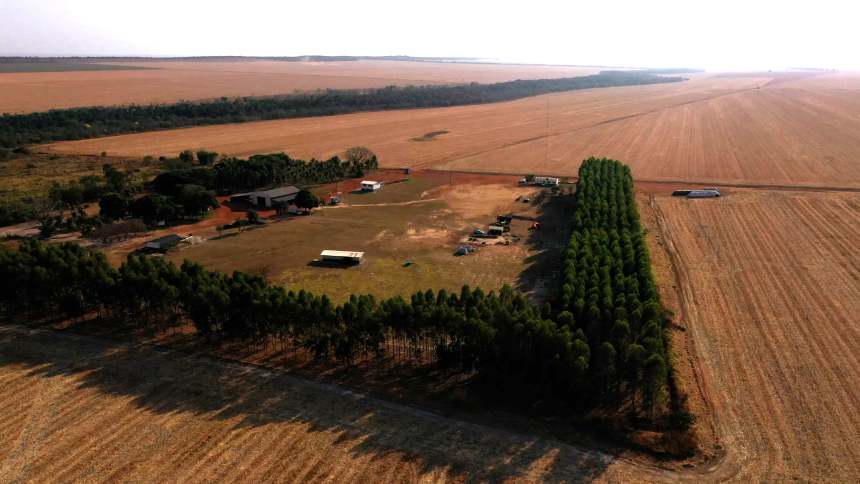
Thus, in December Amaggi decided to take another step, turning another of its farms into the first one to use exclusively B100 in all its operations.
The unit selected was the Sete Lagoas farm, in the city of Diamantino, approximately 220 km away from Lucas do Rio Verde, facilitating the fuel delivery logistics.
The decision required including new categories of machines, such as harvesters. With the test results in hand, Amaggi established a partnership with the manufacturer John Deere, which had provided the motor grader used at Itamarati.
“We disassembled the machine’s injection part for analysis and saw it was in perfect condition. They liked what they saw and decided to take the chance with us,” he says.
Thus, in the new phase at Sete Lagoas, all machines used as of March – when Amaggi expects to have definitely been greenlighted by ANP – will be from the American manufacturer.
“They will be very close, following the analysis of consumption and emissions. This should generate a really interesting data history for the evolution of engines and machines developed by John Deere.”
For the full plan execution, the company’s truck fleet also had to be fueled with B100. In this case, another partnership was made – this time, with Scania.
The Swedish maker had already collaborated with tests conducted on Amaggi’s road fleet, helping the company meet one of the requirements from ANP: the issuance of a warranty letter, which allowed adapting the vehicles’ engines to run on biodiesel. Last year, the agricultural company requested the organ an authorization to use biofuel in 300 trucks.
Since there were costs in adjusting filters and calibrating catalytic converters, the number of vehicles involved in the test was quite lower, but considered sufficient to also check its feasibility – the consumption with biodiesel was only 1% higher than the one by conventional vehicles, without decrease in performance.
Thus, instead of expanding the adaptation efforts, Amaggi decided to go for renovation and, in early December, made an order for 300 new trucks to Scania. One hundred of them leave the maker fully prepared for the use of B100 and are expected to be delivered by May. Amaggi’s fleet currently has 700 trucks and may reach 1,100 by the end of 2024.

With 3,600 hectares (nearly 2,600 of them cultivated), Sete Lagoas is one of the smallest farms in the group, but it will receive double the attention in the coming months, since the assessment of results from its operation shall also determine the speed of expansion of the idea to also transform other properties for operation with 100% biodiesel.
“There is constant evaluation and we no longer consider this a test, but a definitive operation. We are very confident and will probably extend the project to more of the group’s farms as it consolidates,” Tomczyk stated.
It is also possible that other machine manufacturers become partners in future expansions. According to the director, there have been constant conversations with them since the beginning of the tests.
“Now that John Deere is willing to dive into the B100 world, other brands may want to go forward with this as well,” he assesses. “In the near future, we also may have new facts with other brands.”
In fact, both John Deere and its competitors have made investments to offer their clients engine options with alternative fuels. The American company, for example, has recently announced the development of ethanol-powered tractors. Others, such as New Holland, bet on biomethane.
“These other sources are still a little bit distant for us,” Tomczyk claims. “Biodiesel makes more sense because we are present throughout the chain.”
The same rationale is present in navigation. In this case, the tests are a bit more complex. The vessels are not fueled during the 11-day trip. Thus, they already travel with the 150,000 liters of fuel necessary for their route.
For this reason, the operation will require that Amaggi assembles a specific structure for storing biodiesel in its Porto Velho facilities.
Tomczyk is confident and speaks of the future before the test even begins. Currently, Amaggi’s fleet has 212 vessels – 200 barges, nine pushers and three supporting boats.
“We believe everything will work out and, then, we will request an authorization to extend the project and use more barges.”



